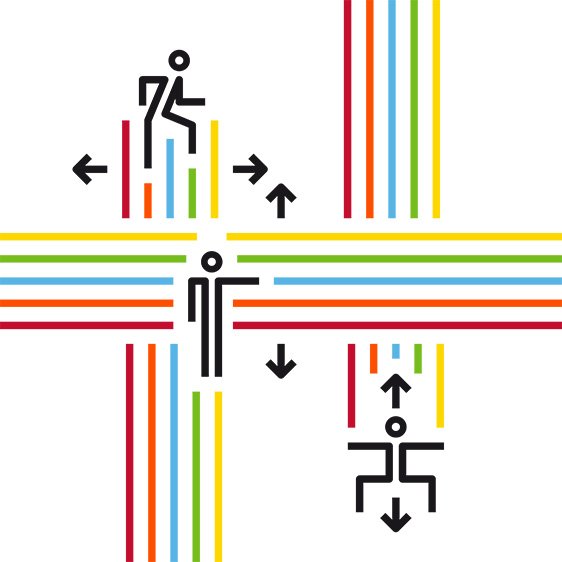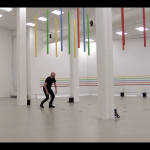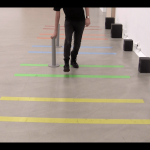
LINES is an interactive sound installation that encourages the audience to participate and create their own polyrhythmic patterns or polyphonic sequencing.
LINES became an intriguing artwork to interrogate as it firstly excites me on the many ways as to how music can be produced. More specifically, LINES emphasizes on the communal aspect of music making — akin to a band, that is, there are three sections to the entire sonic installation.
The first instrument, titled ‘FIVE LINES’ experiments with pitch. The second, titled ‘TEN LINES’ experiments with temp and finally the third is titled ‘FIFTEEN LINES’ and plays with the dynamics of sound.
Utilizing the concept of step sequencing, LINES provides minor shift registrations but within a specified musical scale. Anders Lind created a system for the audience to interact within, minimizing disorder and haphazard, musical creations. Through creating a system that falls within a specific musical scale and shift registrations, the audiences are free to move, experiment and play with LINES; within the space itself yet, live through an enriching sonic experience full of interactivity.
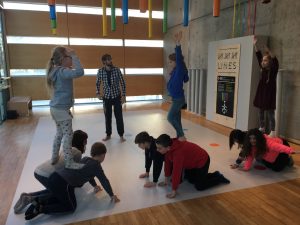
http://kssf-berlin.de/neu/2018/04/16/lines-klangkunst-im-felleshus-22-2-2018/
LINES pushes the boundary in traditional music making equipment / software through envisioning a space of co-creation and sonic experimentation. With three separate instruments that are distinct, a symphony occurs beyond the traditional means of an orchestra or 5-piece band. Branching from an idea that the body could be an instrument, we can disrupt and rebuild music compositions through simply existing and interacting with space. The audience is the composer and the listener. It is, therefore akin to a living organism — beyond the means to simply accommodate, but morphs and interacts with various subjects.
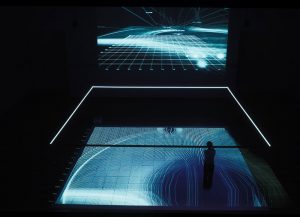
https://www.someslashthings.com/online-magazine/2016/4/6/someart-gravicells-by-seiko-mikami-sota-ichikawa
Seiko Mikami’s Gravicells surveys the concept of the installation and interaction through notions of gravity and space. Space; partially refers to the occupancy by an audience in an area but more interestingly, the concept of space itself, as a fluid form in a 3-dimensional space. Consistently mutating by physical presence, yet retaining a distinct form. This became the entry point for my interest.
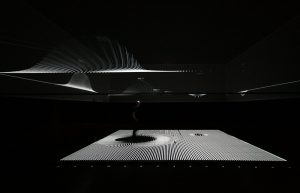
https://www.someslashthings.com/online-magazine/2016/4/6/someart-gravicells-by-seiko-mikami-sota-ichikawa
Collaborating with architect Sota Ichikawa, Gravicells provokes the element of gravity and space through including the element of the audience. Line projections, similar to topographic scales are distorted as the system evolves and consistently calculates the participant’s height, weight, spatial positioning, gravitational forces, and speed. Raw data from a participant is then mapped to distort line projections, modulate lights and oscillate the soundscape within the installation. Seiko Mikami observe this concept as ‘pseudo-coding’.
Gravicells, exists as a system for the audience to interact, within. The reactivity and overall inclusiveness of the interactive installation exert the element of immersion. The participant, constantly reminded as they are a force in itself, molds the shape of space.
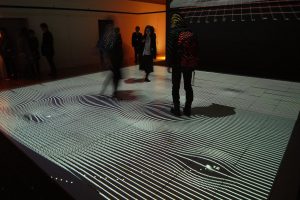
https://www.flickr.com/photos/taromatsumura/2423186872
Through the use of each participant’s raw data, the GPS satellite located vertically above, alongside the sensing mechanism positioned in a grid, along the floor ensures a novel experience. Given that every participant is unique, the distortion of the topographic lines, modulation of the audio and lights are unique vis-a-vis an audience. Therefore, Gravicells not only meditates between the correlation of gravity and space but draws in the human element of human interaction — our existence as a moving force to both gravity and space.
